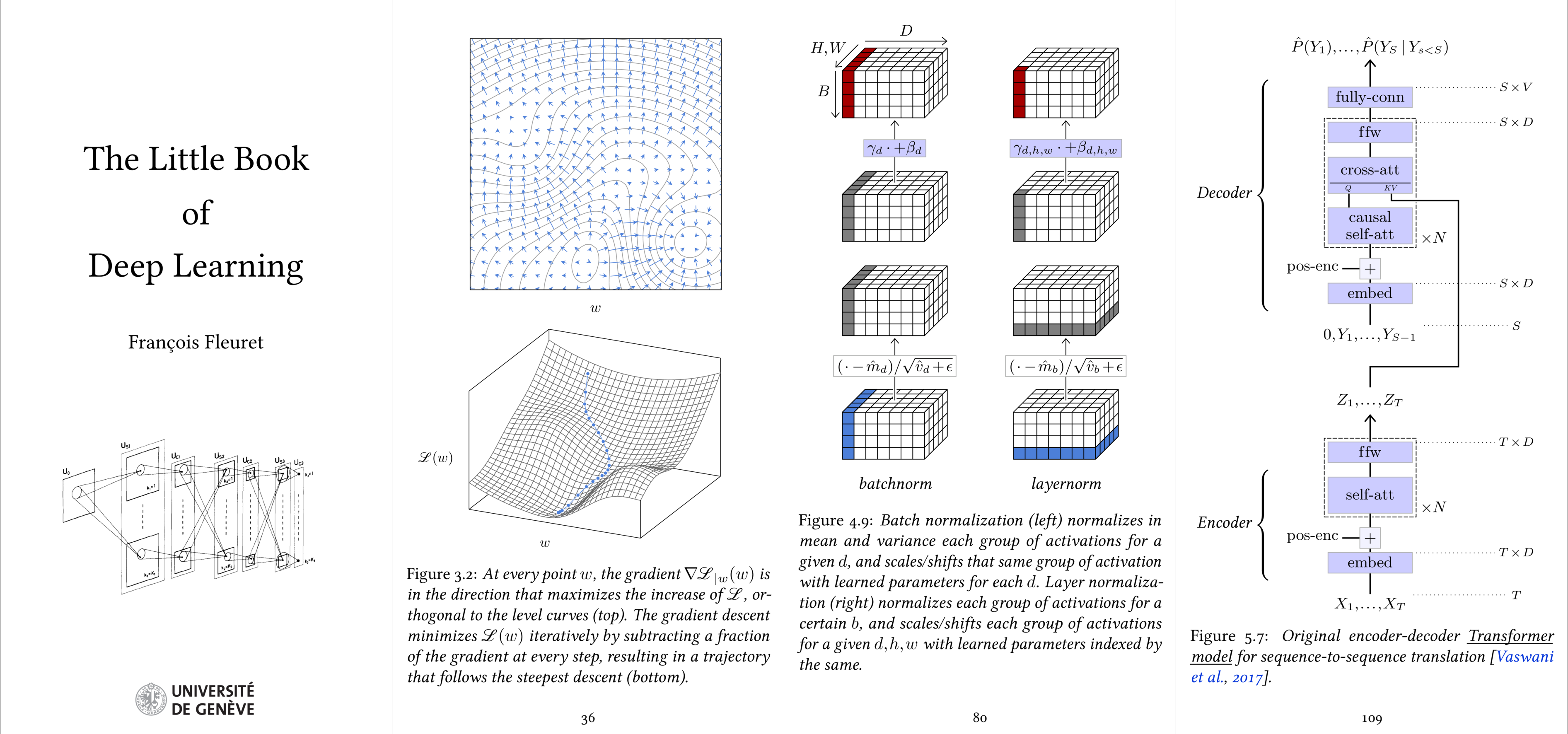The Little Book of Deep Learning
This book is a short introduction to deep learning for readers with
a STEM background, originally designed to be read on a phone
screen. This is the v1.2 updated on May
19th, 2024.
It is distributed under a non-commercial Creative Commons license
and was downloaded
600'000 times in a
bit more than a year.
Download the phone-formatted pdf
Buy a
$9 paperback copy on lulu.com
Download a printable A5 booklet pdf
Note that the version sold on Amazon and other on-line platforms
for $40 is "unauthorized": someone stole the content and sells
it. Preventing this would require to sue and I have better things to
do with my time.
Updates
V1.2 (May 19, 2024)
- Chapter 8. New chapter on low-resource methods (prompt
engineering, quantization, low-rank adapters, model merging).
- Miscellaneous. Changed "meta parameter" to "hyper
parameter".
- Section 3.6. Added a sub-section about fine-tuning.
- Section 4.8. Added the note about the quadratic cost of
the attention operator
- The missing bits. Added a note about the O(T) of standard
RNNs vs. the O(log T) of methods that leverage parallel scan.
V1.1.1 (Sep 20, 2023)
- Section 4.2. Added a paragraph about the equivariance of
convolution layers.
- Section 5.3. Fixed the description of the original
Transformer, and modified Figures 5.6, 5.7, 5.8, and 5.9
accordingly.
V1.1 (Sep 8, 2023)
- Miscellaneous. Fixed minor typos and phrasings.
- Section 1.3. Reformulated the text to clarify that overfitting is not
particularly related to noise, but to any properties specific to the
training set, as it is the case on the Figure 1.2.
- Section 3.2. Clarified the phrasing and changed the
Figure 3.1.
- Section 3.4. Fixed the indexing of the mappings in the example of a
composition.
- Section 3.7. Fixed the label "1TWh" in Figure 3.7, that should be
"1GWh".
- Section 4.5. Added a figure to illustrate the functioning of 2D
dropout.
- Section 4.6. Changed the Figure 4.8 so that in the top
part illustrating the re-scaling / translating after
normalization, the highlighted sub-blocks correspond to groups
of activations that are re-scaled / translated with the same
factor / bias.
- Section 6.6. Restricted the Figure 6.4. to three
sub-images to make the text more legible.
- Section 7.1. Added two paragraphs to introduce the
notion of Reinforcement Learning from Human Feedback.
- The missing bits. Removed the fine-tuning
sub-section, since most of it was moved to Section 7.1.
